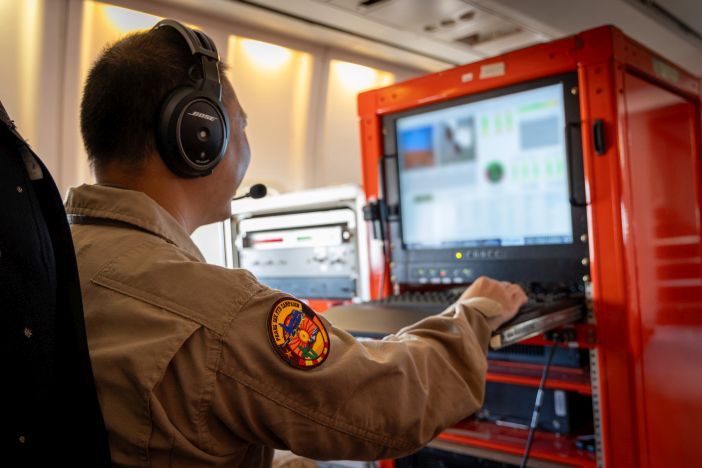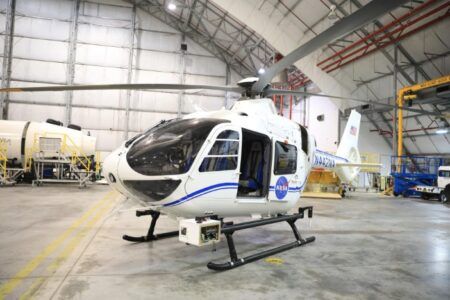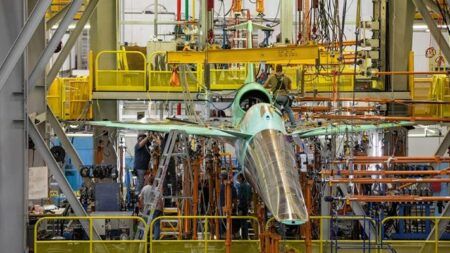After 30 flights into the six-month campaign, Rolls-Royce completed flight trials with the Pearl 10X, the latest and most powerful iteration of its Pearl family of business aviation engines, in the last week of September.
The program proceeded smoothly, but with the Pearl 15 engine already powering Bombardier’s Global 5500 and 6500, and the Pearl 700 installed in the Gulfstream G700 and G800, just how much testing was really required to prove the Pearl 10X for Dassault’s forthcoming Falcon 10X?
Senior vice president Dassault, business aviation at Rolls-Royce, Dr Philipp Zeller oversees the Pearl 10X program. He says, “We’ve been successful with family platforms in the past, including the BR700 platform that produced the BR710 BR725, and BR715 regional applications. We’re doing the same with the Pearl, starting with the Pearl 15 included the new Advance2 engine core, and we built on that for the Pearl 700. The Pearl 10X is built on the same foundation so much of the core architecture and technology are the same.
“But we are integrating it into a new airframe and every airframe comes with a set of bespoke requirements. Those drive some major differences in the installation, including an all-new nacelle, build-up unit, mount system, and software. With the turbomachinery, the core, we aim to minimize changes as much as possible to maintain maturity. But the Pearl 10X is our most powerful business aviation engine ever, so we’ve injected technology into the Advance2 core, including a new low-emissions combustor with additive layer manufacturing tiles that allow us to push the temperatures inside the engine a bit higher and still maintain compliance to emissions regulations and keep the turbine adequately cool.
“When you introduce changes you want to test how they affect engine performance and operability, which is why we test on ground vehicles and testbeds, and in flight. Nothing tells you more about an engine than operating it at high altitude.”
Zeller refers to the pedigree engine, meaning the base Pearl design, and how test and certification data from previous Pearl trials were reused in the Pearl 10X effort where “the parameters were sufficiently representative”.
“Some of the earlier evidence was therefore reused, but in other cases, we were outside the tested parameters and needed to generate new evidence. There is little room for extrapolation but usually space for interpolation in test data,” says Zeller.
Rolls-Royce has invested heavily in digital technologies, including systems that extract gigabytes of data every time a Pearl engine flies in service, plus design tools, modeling, digital twins, and more. With Pearl 10X trials happening in the virtual world and on test rigs, what more was gained by taking it airborne?
“We invest massively into our prediction capability, and it helps us go into a test flight with a high level of confidence,” Zeller remarks. “Usually we are flying to confirm that our assumptions and models were correct rather than to discover something. In the case of the Pearl 10X, we were 100% spot-on with our predictions based on the pedigree data and performance models.
“For some testing, the models are not good enough to provide the data we need. As an example, when we test against the requirements on flammable fluid drainage, even the best models we have available to us don’t tell us exactly where a fluid drop will end up around the engine and nacelle. It must be tested and any areas of concern addressed. Trials help us identify weak points early and fix them, leaving this type of testing and fix until later in the program can require a great deal more effort.”
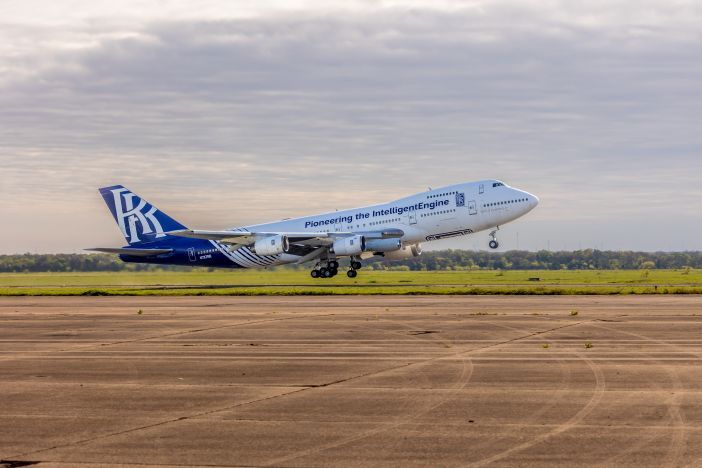
(Image: Rolls-Royce)
Integrated installation
Rolls-Royce’s Boeing 747-200 flying testbed (FTB) was modified to accommodate the integrated unit of Pearl 10X and its nacelle under its starboard wing, in clean air well forward of the leading edge. The Falcon 10X carries its engines in typical business set fashion, on either side of the rear fuselage and the 747/Pearl 10X interface includes a perpendicular mount so that the engine is carried horizontally, rather than underslung.
Zeller continues, “In the business aviation world we supply integrated powerplant solutions, which means everything that ‘hooks up’ to the aircraft pylon, including the engine, the engine build-up unit, the mount system, the nacelle and the software that keeps everything ‘spinning’. We test all of it, so the Pearl 10X configuration we put on the flying testbed was an entire powerplant, with the intention of also testing the engine installation as closely as possible in a representative configuration.”
John Knight, head of test and rigs for rest of World at Rolls-Royce confirms that the entire Pearl 10X flight test campaign was completed out of the FTB’s Tucson, Arizona home base: “For some campaigns, we travel to other locations depending on what we need to demonstrate. For the Trent engines, for example, we’ve tested in La Paz, Bolivia, for high-altitude take-offs and in other areas chasing different weather for hot and cold campaigns.”
Although it is a highly capable platform, the 747 FTB cannot match the 0.925 maximum operating Mach number or 51,000ft maximum certified altitude capabilities of the Falcon 10X, meaning only the business jet can take the Pearl 10X to the limits of aircraft performance.
Zeller acknowledges the limitation but adds: “We configured the FTB so that we could test throughout most of the engine design envelope. In addition the FTB’s engine fit allowed us to test at higher altitudes than a regular 747-200.” Indeed, a Trent 1000 test engine replaces the port inboard RB211 on the FTB, which was therefore equipped with three RB211s, a Trent 1000 and a Pearl 10X for the latter’s trials. Zeller continues, “We tested up to 45,000ft thanks to the extra power from the Trent 1000. We can also test some configurations at lower altitudes, so although we can’t test the extremes of the envelope, there are some corners the Falcon couldn’t reach. It would not normally fly lower down with one engine out or for relight tests, for example, but the 747 configuration allowed us to do that down to 2,500ft.”
Throughout the Pearl 10X program, the new engine performed entirely as a test article, with aircraft power coming from the RB211s and Trent 1000. The cockpit crew therefore controlled the primary propulsion units, while flight test engineers on the experimental deck managed thrust settings and other Pearl 10X parameters; ultimately, the pilots could in extremis override their inputs, taking control of the test engine for reasons of flight safety.
Spirit of excellence
Built as a 747-267B for Cathay Pacific and delivered in April 1980, the FTB was briefly held in storage during 1998/99 before being leased primarily to Air Atlanta between 2000 and 2004. Returned off-lease, the aircraft was purchased by Rolls-Royce in 2005 and named Spirit of excellence. It gained a Trent 1000 trials role in 2016 and has enjoyed a busy career, certifying every Trent 1000 variant, taking part in a variety of technology trials and demonstrations, and the Pearl campaigns – Zeller describes it as “experienced”.
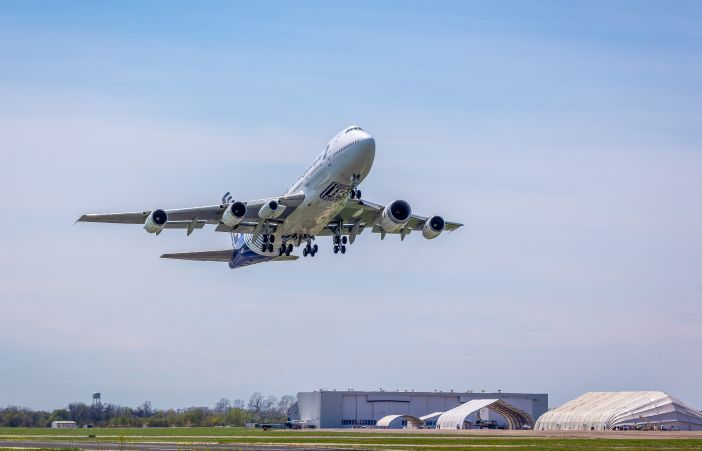
a test flight (Image: Rolls-Royce)
US company V2X operates and maintains the 747 at Tucson. “Our expertise is in the crews who operate the test engines and the experts who come onboard to conduct campaigns and collect data,” Knight says, “while the aircraft element is largely outsourced.” With the imminence of its 45th year of service, Knight acknowledges that spare parts are becoming a little more difficult to source, although the FTB has a useful number of flying hours left. “We have some longevity in the operation, and plenty of spare engines,” Knight reports with a smile.
The FTB emerged from months of modification for Pearl trials as a five-engined 747 with two engines of different types to port and three engines of two types to starboard. How is subsequent maintenance performed on this uniquely configured 747? Knight responds, “Many of the systems are common with standard commercial aircraft so many of the maintenance procedures are the same. But there are differences and in making those changes and defining what we need to do to maintain them we contract the experts at L3. Both the Trent 1000 and Pearl installations were major capital projects conducted by L3.”
The commercial 747-200 was equipped with a seldom used hardpoint under the port inner wing where a spare engine could be mounted for ferry. With the Trent already on the FTB’s regular left inboard engine pylon, the ferry hardpoint was mapped across to starboard for the Pearl installation. Knight describes the modification as requiring relatively minor engineering changes, with no special structural alteration to wing ribs.
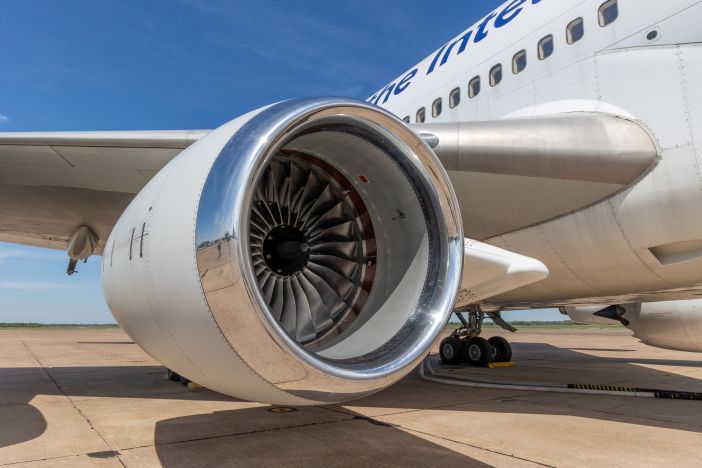
Addressing the thrust delivered by its mismatched engines and the potential challenges of their very different system requirements, Knight explains, “The aircraft has several fuel tanks and there are fundamental design features in the 747 around redundancy. The Pearl engine takes the same fuel feed as the Number 3 engine – the inboard RB211 on the starboard side. Crew at the control and data collection stations in the aircraft cabin are largely responsible for the Pearl, while a team, usually of two, controls the Trent 1000 as part of the flight crew.”
Of course, the aircraft is extensively instrumented and multiple parameters are recorded. The screens on board are configured prior to flight to display specific parameters depending on the current test point, but all data is stored for subsequent download. No data was telemetered during Pearl trials and Knight says Rolls-Royce typically does not use telemetry during FTB trials. Zeller adds, “We are fortunate to be able to carry a lot of people. That means if a quick judgement is required on critical data, whether a test point has been achieved, then experts will be on the flight, capable of making decisions in real-time.”
Campaigns and test points are typically planned well in advance, the 747’s capacious fuel tanks enabling repeated test points should a test fail to deliver data. However, Knight notes, “We always consider the human factors, thinking carefully about how many hours the crews work because the task requires concentration, we’re after maximum quality and we’re aware that people become fatigued.”
Operator stations are placed on the aircraft’s main deck, typically supporting a test crew of between ten and 15 engineers.
Knight says, “There are some old airline seats left ‘upstairs’, but they are seldom used because we tend not to take passengers very often.” The seats may be filled when the aircraft deploys away from Tucson, while its expansive holds take a range of equipment essential for the trials campaign and, if necessary, spare parts and other items.
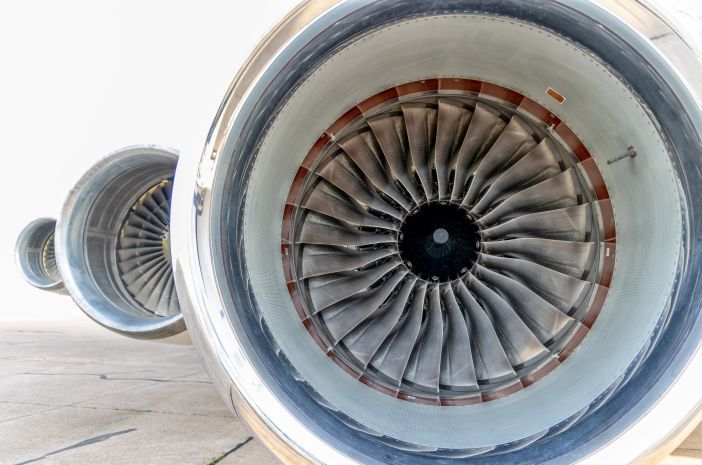
Rolls-Royce FTB. The shape of its fan blades makes an interesting comparison with the blades of the legacy RB211s outboard
Such remote campaigns are planned in detail long in advance, ensuring test points are understood and the people and resources needed to achieve them in place. Knight says that overseas deployment requirements including visas and work permits add another essential planning element. He continues, “Typically, a campaign like this would be around two weeks, during which we’re unlikely to fly every day.”
The Pearl installation has enabled the testing of a business jet engine on what was previously a platform dedicated to large commercial engines. Referencing the Trent 1000, Knight concludes, “We’ve already trialed three variants of Trent 1000 in three separate campaigns. The installation was common, the engine was different but the aerodynamic line was the same, so subsequent programs depend on what level of change and which additional test points are required.
“The difficult part is modifying the aircraft and integrating it for the engine, and the same is true for the Pearl.” For now, the Trent 1000 is likely to remain in place while Spirit of Excellence awaits its next campaign.


